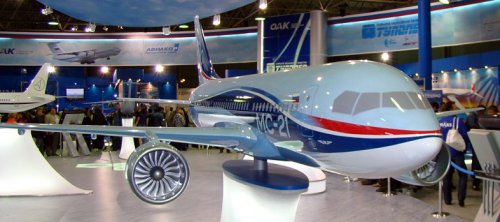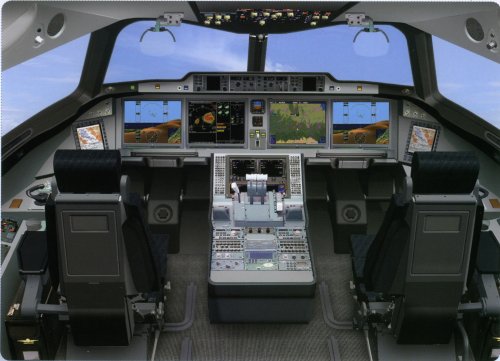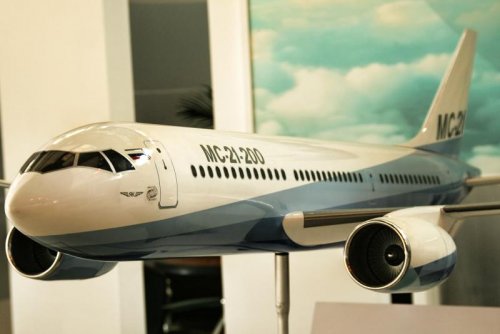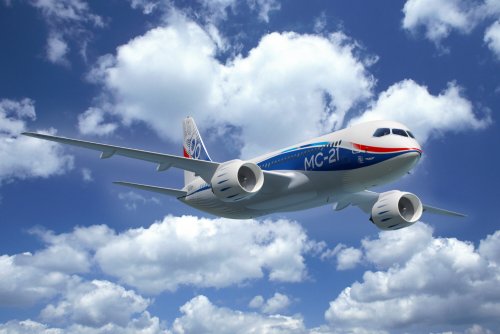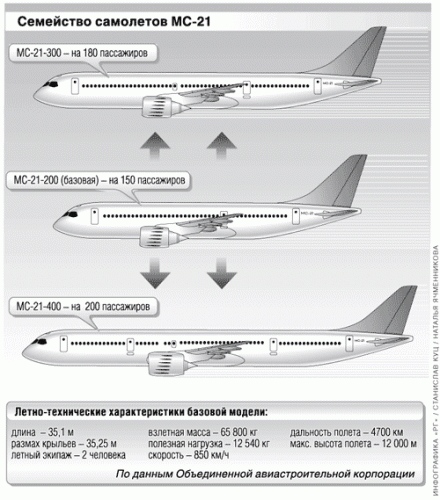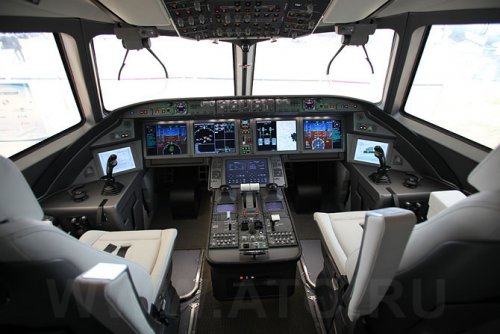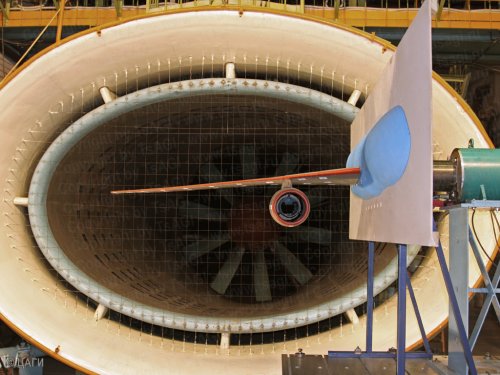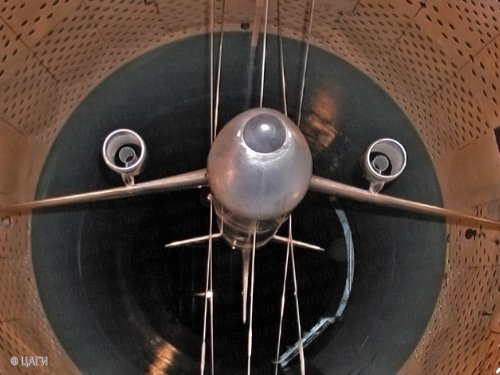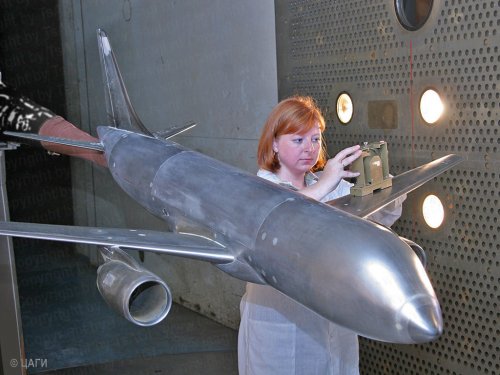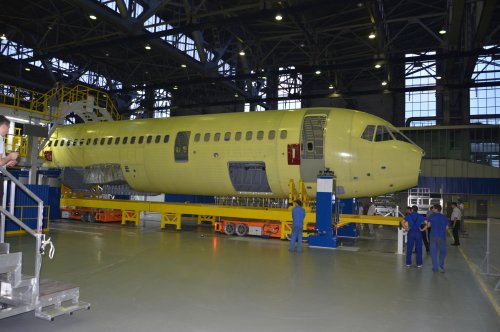You are using an out of date browser. It may not display this or other websites correctly.
You should upgrade or use an alternative browser.
You should upgrade or use an alternative browser.
UAC MS-21 (Yak-242)
- Thread starter hesham
- Start date
The UAC MS-21 (Russian: МС‑21 "Магистральный самолет 21 века" - "Magistralny Samolyet 21 veka" - "Airliner of the 21st Century") is a proposed series of three twin-engine short-range and mid-range Russian jet airliners with a capacity of 150-212 passengers to be produced by companies of the United Aircraft Corporation (UAC) group. It is being jointly developed by Irkut, Yakovlev, and Tupolev, with Sukhoi and Ilyushin also being involved in the program. It is essentially an improved version of the Yakovlev Yak-242, planned design which never got beyond the drawing board. Slated to replace the Tupolev Tu-154 and Tupolev Tu-204/214 in service. Certification is planned by 2016.
Source: http://en.wikipedia.org/wiki/UAC_MS-21
Model of UAC MS-21 on display at MAKS 2005.
Source: http://www.zlobni.ru/tags/%D2%D3-204/
Source: http://en.wikipedia.org/wiki/UAC_MS-21
Model of UAC MS-21 on display at MAKS 2005.
Source: http://www.zlobni.ru/tags/%D2%D3-204/
Attachments
Model of MS-21-200 on display at MAKS 2007.
Source: http://www.avia-n-aero.ru/photo.php?category_id=564&parent_id=564
http://www.zlobni.ru/uac/26-uac26.html
Source: http://www.avia-n-aero.ru/photo.php?category_id=564&parent_id=564
http://www.zlobni.ru/uac/26-uac26.html
Attachments
- Joined
- 1 April 2006
- Messages
- 10,889
- Reaction score
- 7,502
Models of the MS-21 family of aircraft on display at MAKS 2009.
NOTE: Original images have been cropped.
Source:http://paralay.com/maks2009.html
NOTE: Original images have been cropped.
Source:http://paralay.com/maks2009.html
Attachments
chornedsnorkack
ACCESS: Confidential
- Joined
- 1 October 2008
- Messages
- 59
- Reaction score
- 2
Irkut chose Pratt and Whitney geared turbofans as an engine option on MS-21:
http://www.flightglobal.com/articles/2009/12/10/336045/irkut-selects-pw-geared-turbofan-as-ms-21-engine-platform.html
MS-21-400 shall require engines of 15 600 kgf each. The biggest PW GTF previously launched was the engine for CS300, at 10 500 kgf thrust. And Cseries needs fan diametre of 185 cm.
How big fans shall MS-21 have?
http://www.flightglobal.com/articles/2009/12/10/336045/irkut-selects-pw-geared-turbofan-as-ms-21-engine-platform.html
MS-21-400 shall require engines of 15 600 kgf each. The biggest PW GTF previously launched was the engine for CS300, at 10 500 kgf thrust. And Cseries needs fan diametre of 185 cm.
How big fans shall MS-21 have?
Model of UAC MS-21-200 on display at Aero India 2009.
Source: http://www.flickr.com/photos/nitinmnair/sets/72157613829649034/
Source: http://www.flickr.com/photos/nitinmnair/sets/72157613829649034/
Attachments
Attachments
Matej
Multiuniversal creator
Deino said:Any info about its current status ?? Have they already started construction ?
No idea about the status of manufacturing, but suppliers for various subsystems such as hydraulics, flight control and air conditioning have been selected. Many work packages were allocated to Western contractors or joint-ventures with local manufacturers, most notably P&W's GTF has been announced as the powerplant of choice (set to become the most powerful member of this engine family, as of now).
Meanwhile, at least two airframes of the interim Tu-204SM (reduced weight, improved PS-90A2, electric slat actuators) are currently completing final assembly.
Matej
Multiuniversal creator
flateric said:I'd say the same
No, the pedestal is clearly totally different and makes the different light reflexes on the surface (which is really significantly important in this case)
Artist's impression of UAC MS-21-200.
Source: http://www.flightglobal.com/blogs/unusual-attitude/2009/08/boeing-737-in-second-life.html
Source: http://www.flightglobal.com/blogs/unusual-attitude/2009/08/boeing-737-in-second-life.html
Attachments
Video of UAC MS-21
http://www.youtube.com/watch?v=yHTdyoTZHi0
http://www.youtube.com/watch?v=yHTdyoTZHi0
Video of UAC MS-21
http://www.youtube.com/watch?v=6MDc24s4AX0
http://www.youtube.com/watch?v=6MDc24s4AX0
Attachments
Artist's impression of UAC MS-21-200, MS-21-300, and MS-21-400.
Source: http://www.zerich.ru/forum/messages/forum11/topic573/message1809/#message1809
Source: http://www.zerich.ru/forum/messages/forum11/topic573/message1809/#message1809
Attachments
Attachments
Profile drawing of MS-21-200, MS-21-300, and MS-21-400.
Source: http://www.uacrussia.ru/ru/models/civil/ms_21/
Source: http://www.uacrussia.ru/ru/models/civil/ms_21/
Attachments
- Joined
- 1 April 2006
- Messages
- 10,889
- Reaction score
- 7,502
Model of MS-21-200.
Source: http://www.militaryphotos.net/forums/showthread.php?99988-Russian-Photos-%28updated-on-regular-basis%29/page2379
Source: http://www.militaryphotos.net/forums/showthread.php?99988-Russian-Photos-%28updated-on-regular-basis%29/page2379
Attachments
If one compares the engine on offer for MS-21 which is the Russian Engine PD-14 variants and the Western Pratt & Whitney's PW1000G geared turbofan engine , the Western engine outclasses the PD-14 engine and the claimed better capability of MS-21 is based on the use of Western Engine.
Can any one explain me how does the PD-14 engine compares to its Western Counterpart ?
http://www.avid.ru/eng/advanced-developments/Regional_Jet/
The PD-14 will also be powering the joint Indo-Russian MTA.
Can any one explain me how does the PD-14 engine compares to its Western Counterpart ?
http://www.avid.ru/eng/advanced-developments/Regional_Jet/
The PD-14 will also be powering the joint Indo-Russian MTA.
- Joined
- 2 January 2006
- Messages
- 3,560
- Reaction score
- 3,309
To admit I'm not sure if this is marketing-wise a wise move !!
http://www.flightglobal.com/news/articles/russia-to-revive-yak-242-name-for-irkut-mc-21-392170/
Deino
http://www.flightglobal.com/news/articles/russia-to-revive-yak-242-name-for-irkut-mc-21-392170/
Russia’s government has indicated that the Irkut MC-21 will be redesignated as the Yak-242 once the twinjet type goes into serial production.
The disclosure came from Russian deputy premier Dmitry Rogozin – a senior defence figure in the country – during a visit to the Irkut aviation facility this week.
Rogozin visited the plant, he said, to “verify the preparedness” of the country’s aircraft industry to meet not only state defence orders but to develop civil products.
Irkut will unveil the first MC-21 prototype in summer 2015, Rogozin said, adding that facilities in Perm would produce the Aviadvigatel PD-14 engine for the type.
He also disclosed that, once serial production is under way, the aircraft will be known as the Yak-242, according to an official Irkut government statement.
The Yakovlev Yak-242 name was originally attached to a 130- to 180-seat twinjet proposal of the 1990s, which eventually evolved into the MC-21.
But it is unclear whether a revival of the identity would also carry the Yakovlev association.
Rogozin was shown initial assemblies for the first prototype MC-21 during the visit to the Irkut plant. He was accompanied by the regional governor as well as Irkut chief Oleg Demchenko.
Deino
- Joined
- 2 January 2006
- Messages
- 3,560
- Reaction score
- 3,309
Any latest news on that project ??
This is the most recent I found:
http://www.4-traders.com/PERMSKIE-MOTORY-OAO-9624306/news/Permskie-Motory--MC-21-300-aircraft-with-PD-14-engines-passed-mockup-stage-successfully-18327147/
Deino
This is the most recent I found:
http://www.4-traders.com/PERMSKIE-MOTORY-OAO-9624306/news/Permskie-Motory--MC-21-300-aircraft-with-PD-14-engines-passed-mockup-stage-successfully-18327147/
Deino
- Joined
- 26 May 2006
- Messages
- 33,049
- Reaction score
- 12,647
Deino said:Any latest news on that project ??
This is the most recent I found:
http://www.4-traders.com/PERMSKIE-MOTORY-OAO-9624306/news/Permskie-Motory--MC-21-300-aircraft-with-PD-14-engines-passed-mockup-stage-successfully-18327147/
Deino
Good news my dear Deino,I never saw this reply.
"Russia approves $400 million for the MC-21"
Aug 27, 2014
Polina Borodina
Source:
http://atwonline.com/airframes/russia-approves-400-million-mc-21
Aug 27, 2014
Polina Borodina
Source:
http://atwonline.com/airframes/russia-approves-400-million-mc-21
Russia’s Prime Minister Dmitry Medvedev has approved $400 million in state guarantees for Irkut MC-21 development. The guarantees secure Irkut Corp.’s obligations under the loan, issued by Sberbank, which extended a $1 billion line of credit for the project. According to the government, the MC-21 program is worth $3.497 billion.
The MC-21 is a medium-haul aircraft with an expected capacity of 150-210 seats. Irkut plans to assemble the first aircraft before the end of 2015.
When the program was launched, certification was planned for 2015, but was later postponed. The aircraft will be equipped with Pratt & Whitney PW1400 GTF engines.
MC-21 customers to date include Ilyushin Finance Co., Sberbank Leasing, VEB Leasing and Russian airlines. Transaero ordered six aircraft last year at the MAKS Airshow.
"ANALYSIS: Irkut builds future on Yak-130 and MC-21"
By: Dominic Perry
Moscow
14:53 8 Aug 2014
Source:
http://www.flightglobal.com/news/articles/analysis-irkut-builds-future-on-yak-130-and-mc-21-400399/
By: Dominic Perry
Moscow
14:53 8 Aug 2014
Source:
http://www.flightglobal.com/news/articles/analysis-irkut-builds-future-on-yak-130-and-mc-21-400399/
“I believe,” says Oleg Demchenko, “that my grandchildren will fly in the MC-21." It is a bullish statement from the Irkut president and says much about his faith in the longevity and sales prospects for an airliner that has yet to roll out, let alone perform its maiden flight.
Still, with a claimed firm backlog of 175 orders and a further 75 aircraft covered by tentative commitments, alongside a programme that has not experienced any disasters over the last 12 months, Demchenko could be forgiven an air of quiet confidence. Not, of course, that he would admit to that. “Here in the aviation business we are all very superstitious – that is the reason why I do not like performance flights during air shows,” he says.
"Optimism and superstition are the hallmarks of our profession," he adds. "If you are pessimistic you will never be able to design an aircraft."
Break-even for the programme comes with delivery of the 300th aircraft, and Demchenko believes it will have netted the required orders by entry into service, currently scheduled for 2017. Giving its sales so far “a B+”, he points out that Irkut’s commercial performance cannot be directly compared with that of its big Western rivals, given their inherent advantages. "When Boeing or Airbus start selling a paper aircraft they have been in the market for a long time – they have their reputation and around 70% of the airlines are their customers,” he says.
Assembly of the first three airframes destined for both ground- and flight-test activities has commenced at the company’s Irkutsk factory, and work continues to finalise the assembly line later this year.
Once slight potential issue reared its head at the end of May, however, with the failure of a PW1500G engine aboard one of Bombardier’s CSeries prototypes while engaged in ground testing. A variant of the same Pratt & Whitney geared-fan powerplant – the PW1400G – will power the MC-21, but Demchenko seems untroubled by the Canadian mishap, dismissing it as "just a regular thing that happens when you start [testing] a new engine".
He still anticipates receiving the first pair of PW1400Gs in 2015.
“There are no problems that cannot be solved,” he says. “It is just a matter of tests and I believe Pratt & Whitney will be very fast to deal with these issues and successfully solve them.”
“Our situation is very good. The CSeries is going ahead of our aircraft so all the minor diseases for that engine will be cured at that stage, and we will receive an engine in very good shape.”
Windtunnel tests and stand tests conducted last year at the Moscow-based Central Aerohydrodynamic Institute (TsAGI) on a number of MC-21 fuselage sections, including the wing box, have helped validate the design, says Demchenko. Although slight modifications were required to one, Demchenko says it has not affected the twinjet’s development timeline. “You always come to this kind of situation because it is the only way to design an aircraft. We are fully keeping [to] the schedule," he says.
Irkut intends to complete assembly of the initial test aircraft next year, with first flight potentially following next year. But Demchenko declines to be drawn on exactly when the narrowbody will take to the skies.
“It is hard to say in which month final assembly will be finished. In front there are a large number of tests to be performed,” he says. “In any aircraft building company in the world there may be all kinds of surprises.”
Meanwhile, says Demchenko, development work on the alternative Aviadvigatel PD-14 turbofan for the MC-21 continues, with the first engine beginning bench tests in July. Flight trials of the indigenously-developed powerplant aboard an Ilysushin Il-76 flying testbed will follow next year, he says, ahead of a planned 2017 certification.
“This is our national programme and it has very large support from the government,” Demchenko adds.
Two key issues remain unresolved, however. First, Irkut’s initial plans for the MC-21 call for a three-aicraft family spanning the range from 150 to 212 seats. The baseline -300, which will accommodate 180 passengers, is the lead aircraft and will be followed by the 150-seat -200 shrink variant. Irkut plans to release key documentation for this model later this year, but question marks still surround the future of the largest planned family member, the -400.
"On the third aircraft we have not made our plans yet, we do not know what kind of aircraft it is going to be," says Demchenko. "This aircraft is more like a widebody aircraft but today we are specialising in manufacturing narrowbodies so we we will have to take a mutual decision together with [parent company] United Aircraft about what kind of aircraft will be the next one."
That decision will be taken "somewhere this year" says Demchenko. "We are trying to study this issue. Because when you design and build an aircraft you should understand the market very well.
"The final word will be said by airlines because we keep our eyes open to what is going on in the world."
The other potential area of doubt is what the narrowbody will actually be called. Last year, Russia’s deputy prime minister Dmitry Rogozin suggested that the twinjet would adopt the Yak-242 designation.
Demchenko says he would "prefer" switching to the Yak-242 to better reflect the design bureau behind the twinjet. "A designer is like a writer," he says. "If there is no name on the title page of the book he will be very upset for a long time."
MC-21 was originally conceived as a neutral moniker to avoid any conflict when Irkut and then design partner Ilyushin were planning to launch a new programme.
Demchenko says that although he is "for the Yak-242" he is happy to hold fire on any rebranding. "It is quite possible that we are going to come up with this kind of name, but now the name is not important. What is important is to build the aircraft and start flying and perform certification tests," he says.
Meanwhile, on the military side, Irkut has two strings to its bow. First is the assembly of the SM and MK variants of the Sukhoi Su-30 combat aircraft, which it carries out at Irkutsk for both domestic and international customers such as India. And second, it produces the successful Yak-130 combat trainer, which Demchenko describes as his “favourite baby”.
So far 35 aircraft have been delivered to the Russian air force flight school from a total order for 55. Demchenko anticipates a follow-on deal will be signed next year for a total of "not less than 60" aircraft for delivery in the 2016-2020 timeframe. In the meantime, other examples are being produced for the export market. Algeria already has its 16-strong fleet in service, and Belorussia has so far received six of the trainers. Demchenko anticipates its eventual requirement will total 15-20 of the Ivchenko-Progress AI-222-powered jets.
Bangladesh, too, has committed to the Yak-130 and it will receive the first of its 24 aircraft next year. More sensitive though are deliveries to Syria, given the ongoing civil war there. Demchenko says Irkut plans to honour the contract, but only when international permissions allow. "It depends on our government and the decision they come to,” he says.
Overall, Demchenko is targeting a 40% share of the market for advanced jet trainers, although describes this as “a very modest projection". In fact, he argues that there are only two aircraft in the segment, the Yak-130 and the Alenia Aermacchi M-346 – which is hardly surprising given their shared origins. "There are two aircraft of more or less the same class, so we are going to divide the market between the two of us."
But more important than simply offering the Yak-130 to customers, says Demchenko, is the ability to provide a “whole combat trainer complex” covering the aircraft itself, simulators and training for both pilots and engineers. And Irkut will add to that offering next year when it performs first flight of its new turboprop-powered Yak-152 basic trainer. Initially destined for delivery to the Russian air force in 2015, which requires “at least” 200 units, Demchenko is eyeing a total market – including non-military customers – of 1,000 aircraft. "All our export customers ask not just for the Yak-130 but a complex: the Yak-130, the Yak-152 and the training classes," he says.
Progress can additionally be discerned in Irkut’s financial performance. In the period to 31 December 2013, revenue grew to a record $1.9 billion, from $1.53 billion the year before. Pre-tax profit was $54 million – a margin of 2.8%. The company attributes the success to two strands: the increased production of both the Su-30 and Yak-130.
However, key to sustaining the financial performance will be the successful execution of the MC-21 programme. But assuming Demchenko’s grandchildren do become passengers on the twinjet, the benefit could be felt for years to come.
- Joined
- 2 January 2006
- Messages
- 3,560
- Reaction score
- 3,309
Any recent news available ??? ... esp. with the Chinese C919 just having entered final assembly.
By the way I had some mess to find this tread again, even after using exactly "UAC MS-21" in the Search function I got NO result.
Deino
By the way I had some mess to find this tread again, even after using exactly "UAC MS-21" in the Search function I got NO result.
Deino
- Joined
- 1 April 2006
- Messages
- 10,889
- Reaction score
- 7,502
Deino said:Any recent news available ??? ... esp. with the Chinese C919 just having entered final assembly.
By the way I had some mess to find this tread again, even after using exactly "UAC MS-21" in the Search function I got NO result.
Deino
Don't forget to choose search area in second drop-out window before you press Search button.
- Joined
- 2 January 2006
- Messages
- 3,560
- Reaction score
- 3,309
Seems as if the prototype is already under construction ...
http://sdelanounas.ru/blogs/66561/
and via http://www.irkut.com/gallery/tag/%D0%9C%D0%A1-21/
Deino
http://sdelanounas.ru/blogs/66561/
and via http://www.irkut.com/gallery/tag/%D0%9C%D0%A1-21/
Deino
Attachments
- Joined
- 2 January 2006
- Messages
- 3,560
- Reaction score
- 3,309
Similar threads
-
-
-
-
Morane-Saulnier MS.760C Paris III business jet prototype......
- Started by Caravellarella
- Replies: 17
-


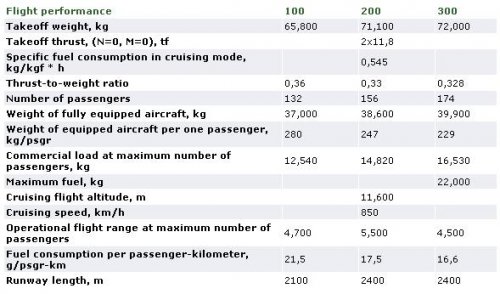
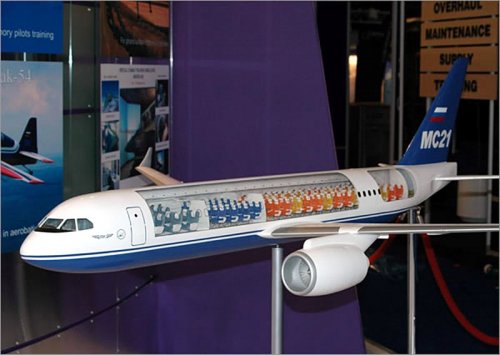
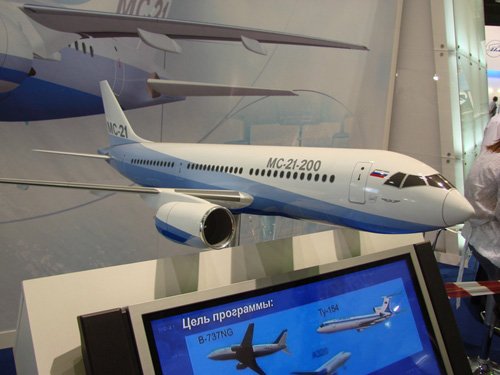

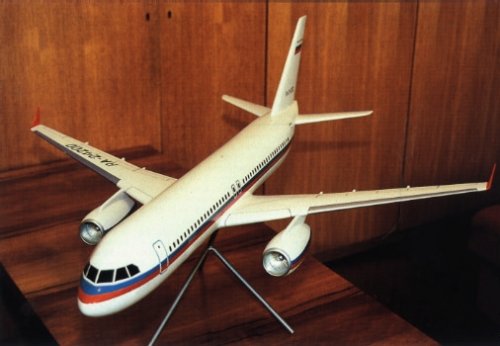
![IMG_3872 [1280x768].JPG](/data/attachments/34/34465-fcfea23ba397d09f86898bbde26d3988.jpg)
![IMG_3873 [1280x768].JPG](/data/attachments/34/34466-cf68c312d4b757ae8d10a0ca9819bdd7.jpg)
![IMG_3874 [1280x768].JPG](/data/attachments/34/34467-e500d36be2c0726c2fe319e89076f887.jpg)
![IMG_3730 [1280x768].JPG](/data/attachments/34/34468-a8833d0af187eef7ea9ee03cbd4e6aca.jpg)

